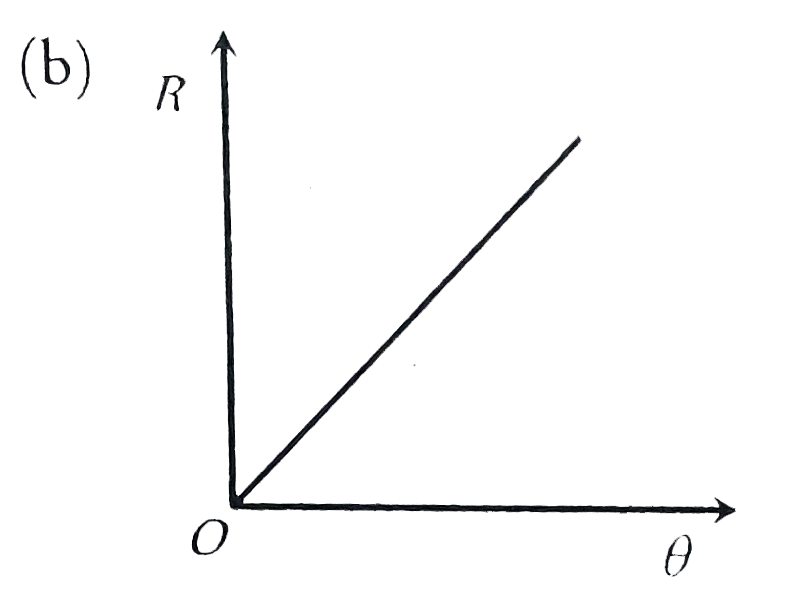A small sphere falls from rest in a viscous liquid. Due to frication, heat is produced. Find the relation between the rate of production of heat and the radius of the sphere at terminal velocity.
r5
r2
r3
r4
The correct Answer is:A
Force of viscosity when sphere moves with terminal velocity vv.
Fv=6πηrvc
Here η is coefficent of viscosity.
Rate of heat generation =force of visocity ×velocity
−Gπηvt.tt=6πηrv2t
Terminal velocity can be proveed to be proportional to square of radius vtαr2
Power =6πηrr4αr54
Topper's Solved these Questions
- MECHANICAL PROPERTIES OF FLUIDSBook:MODERN PUBLICATIONChapter:MECHANICAL PROPERTIES OF FLUIDSExercise:Competition File (JEE (Main) & Other State Boards For Engineering Entrance)
Explore 23 Videos
- MECHANICAL PROPERTIES OF FLUIDSBook:MODERN PUBLICATIONChapter:MECHANICAL PROPERTIES OF FLUIDSExercise:Competition File (JEE (Advanced) For IIT Entrance)
Explore 14 Videos
- MECHANICAL PROPERTIES OF FLUIDSBook:MODERN PUBLICATIONChapter:MECHANICAL PROPERTIES OF FLUIDSExercise:Competition File (A. MCQ (Objectie Type Questions))
Explore 20 Videos
- MATHEMATICAL TOOLSBook:MODERN PUBLICATIONChapter:MATHEMATICAL TOOLSExercise:PRACTICE PROBLEMS (10)
Explore 12 Videos
- MOTION IN A PLANE Book:MODERN PUBLICATIONChapter:MOTION IN A PLANE Exercise:Chapter Practice Test
Explore 15 Videos
Similar Questions
A small sphere falls from rest in a viscous liquid. Due to friction, heat is prodced. Find the relation between the rate of production of heat and the radius of the sphere at terminal velocity.
View SolutionA small sphere falls from rest in a viscous liquid. Due to friction, heat is produced. Find the relation between the rate of produced heat and the radius of the sphere at terminal velocity.
View Solution
Knowledge Check
A small sphere falls from rest in a viscous liquid. Due to frication, heat is produced. Find the relation between the rate of production of heat and the radius of the sphere at terminal velocity.
Ar3Br2Cr3Dr4For a small temperature difference between the body and the surroundings the relation between the rate of loss heat R and the temperature of the body is depicted by
A B
B C
C D
D
When a sphere falling in a viscous fluid attains a terminal velocity, then
Athe net force acting on the sphere is zeroBthe drag force balances the buoyant forceCthe drag force balances the weight of the sphereDthe buoyant force balances the weight and drag force
A small spherical body of radius r is falling under gravity in a viscous medium. Due to friction the meduim gets heated. How does the rate of heating depends on radius of body when it attains terminal velocity?
View SolutionHeat is produced due to viscous forces when a small sphere of radius r falls from rest in a viscous liquid. When the sphere has reached its terminal velocity, the rate of heat production is proportional to rn, where n = _____.
View SolutionA small spherical ball falling under gravity in a viscous medium heat the medium due to viscous drage force. The rate of heating is proportional to rn. (r= radius of the sphere find )n.
View SolutionFor a small temperature difference between the body and the surroundings, the relation between the rate of heat loss R and the temperature of the body is depicted by
View SolutionA solid metallic sphere of radius r is allowed to fall freely through air. If the frictional resistance due to air is proportional to the cross-sectional area and to the square of the velocity, then the terminal velocity of the sphere is proportional to which of the following ?
View Solution

